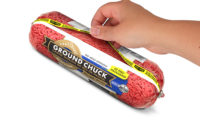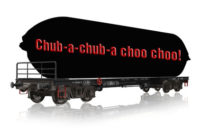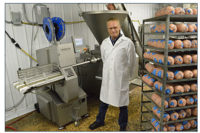Chub packaging has been around seemingly forever (since the 1940s) but continues to capture market share. That’s because it offers advantages for processors, retailers and consumers including extended shelf life, sustainable attributes and good economics for products such as ground beef, ground turkey, sausage, chorizo, salami, taco meat and pet food.
Other market forces encouraging adoption of chub packaging include growing demand for ground beef and rising protein consumption in developing countries as incomes expand, according to Chub Packaging Market — Global Industry Analysis, Size, Share, Growth, Trends and Forecast 2016-2024, a market study by Transparency Market Research.
For processors, chub packaging lowers material costs compared with tray packaging and needs no secondary packaging if the film is printed. The latest chub packaging machines also reduce costs and enhance sustainability by conserving film, more efficient cleaning and lower energy consumption. Replacing preformed clips with clips formed online from rollstock also represents a cost savings. Economically priced equipment offers a low barrier to market entry. For higher volume requirements, more sophisticated machines produce chubs at rates of up to 160 per minute and robotic systems are automating case packing. Advanced electronics and software provide superior motion control, safety and connectivity to other systems and for remote diagnostics. The result is a high level of flexibility and simplified operator training and troubleshooting.
For the retailer, chub-packed products offer attractive price points and are shelf-ready and easy to stock in the refrigerator or freezer case.
For the consumer, printed portion marks simplify portion control and preparation for cooking or freezing single servings. Barrier film extends shelf life to the point where it is measured in weeks rather than days, and unopened chubs can be stored in the freezer for several months without loss of product quality.
The use of lightweight film and the absence of secondary packaging offer advantages at all points of the value chain and meet demands for sustainability. On the downside from an environmental perspective, the multilayer barrier films typically end up in the trash. New post-consumer recovery options are on the horizon, however, as organizations here and abroad work at the beginning and end of the value chain. As a result, converters and polymer specialists continue to develop more easily recycled barrier films with appropriate sealing properties and puncture resistance, while several groups focus on establishing a viable recycling infrastructure for multilayer flexible packaging.
For example, a European consortium of companies representing the flexible packaging value chain has embarked on a collaborative initiative, a Circular Economy for Flexible Packaging (CEFLEX), and set a 2025 goal for the implementation of a collection, sorting and reprocessing infrastructure/economy for post-consumer flexible packaging across Europe. Toward this end, the group is developing design guidelines for flexible packaging and post-consumer collection, sorting and recycling; identifying and nurturing markets for recycled flexible packaging materials; and ensuring there is a sustainable business case at each step in the circle.
In the United States, a research collaborative known as Material Recovery for the Future (MRFF) has brought together leading brands, manufacturers, packaging companies and other members of the flexible packaging value chain to work on recovery options. It’s a project of the American Chemistry Council’s Foundation for Chemistry Research and Initiatives. In 2019, MRFF established the U.S.’s first curbside recycling program to accept flexible plastic packaging with other recyclables. The goal of the pilot program is to “identify the best way to collect, sort and capture value from residential recyclables, using state-of-the-art equipment to test a positive sort for a flexible plastic packaging material mix.” The group also has identified potential markets for recycled flexible packaging materials including durable goods, green building materials, work-in-process items and injection-molded consumer products. NP







Report Abusive Comment